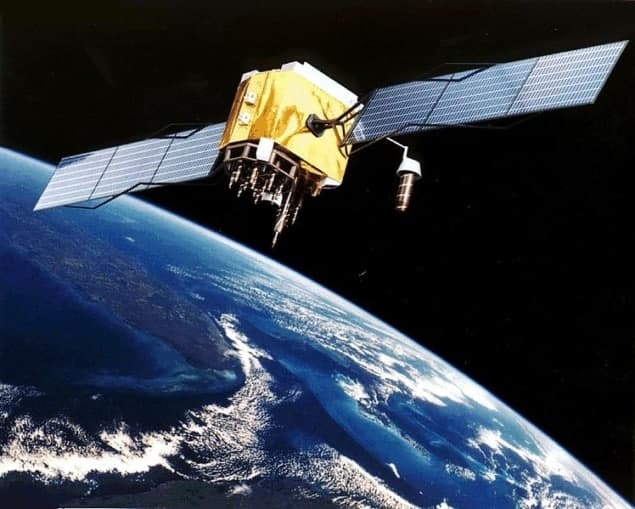
Physicists in the US say that they have used publicly available data from global positioning system (GPS) satellites to put a limit on how much Planck’s constant might vary from place to place. Their technique involves analysing the tiny corrections that are applied to the atomic clocks used in GPS satellites – corrections that are made to account for relativistic effects caused by the orbits of the satellites. However, not all physicists agree that the analysis is meaningful.
GPS relies on extremely accurate measurements of how long it takes signals to travel from several satellites to a receiver on the ground. As these timings have to be incredibly precise, atomic clocks are used on board the satellites. These clocks measure the frequency of electromagnetic radiation involved in a specific atomic transition, which is related to its energy via Planck’s constant.
For reasons outlined in Einstein’s special and general theories of relativity, the clocks in space must be corrected on a regular basis so that they agree with atomic clocks on Earth and with each other. Once the appropriate relativistic corrections are made, however, the time on the clocks should be identical regardless of any differences in the local gravitational potentials of the clocks. So if there is still a deviation once relativity is taken into account, Planck’s constant might vary from place to place – in other words, the concept known as local Planck invariance (LPI) might not hold true.
James Kentosh and Makan Mohageg of California State University at Northridge now say that they have used these publicly available satellite data to put an upper limit on the possible violation of LPI in the value of Planck’s constant. By comparing the corrections that were actually made to the clocks with those defined by relativity, Kentosh and Mohageg have calculated an upper limit on the extent that LPI violation is occurring.
Comparing corrections
Planck’s constant defines the size of energy quanta in a physical system: a quantum of electromagnetic radiation (the photon) has energy proportional to Planck’s constant multiplied by the frequency of the electromagnetic field, for example.
Kentosh and Mohageg looked at seven of the 32 GPS satellites on the basis that these had the most stable clocks. The clock corrections are published at 15 min intervals and the pair looked at 13 months of data in 2010–2011. They looked at how the corrections varied as a function of the radial distance of the satellite from Earth and found a small discrepancy in what would be expected from relativity.
This, however, is not enough to put a limit on LPI violation for Planck’s constant because it is possible that the way time dilation affects the different clocks could also violate LPI. The team says that it has taken this into consideration by looking at a study done in 2010 by Victor Flambaum of the University of New South Wales, and colleagues in Australia and France. Flambaum and the team compared the time kept by an atomic clock with the time on a cryogenic sapphire oscillator clock at the Paris Observatory. According to Kentosh and Mohageg, the results of Flambaum’s experiment can be used to place a limit on the LPI violation of time dilation in their study. Putting all of this together, Kentosh and Mohageg find that Planck’s constant satisfies LPI to within 0.007.
Three faults?
However, not everyone agrees with this conclusion, including Flambaum himself. He told physicsworld.com that he finds three faults with a paper describing the analysis, which has been published in Physical Review Letters. Planck’s constant has the dimensions of energy multiplied by time and Flambaum says there is no point in looking for variations in fundamental constants that have dimensions because the units defining those dimensions could also be varying.
Instead, he believes that physicists should focus on dimensionless quantities, such as the fine-structure constant. He also points out that the atomic clocks used in the study were all similar and therefore their operations have the same dependencies on physical constants – making it impossible to look for violations of LPI. Instead, he argues that two different clocks are required. Finally, Flambaum does not agree with Kentosh and Mohageg’s interpretation of his 2010 clock-comparison paper.
Kentosh told physicsworld.com that he and Mohageg are aware of the limitations of their analysis: “It is important to note that our results apply only within the context of general relativity, which predicts that the speed of light, rest mass, energy and length are invariant when measured locally. If any of those macroscopic variables were to vary with gravitational potential, as measured locally, it would skew our findings.”
Kentosh and Mohageg are now working on a new paper that describes their technique in more detail. Meanwhile, Flambaum and colleague Julian Berengut have submitted a comment on the topic for publication in Physical Review Letters.



